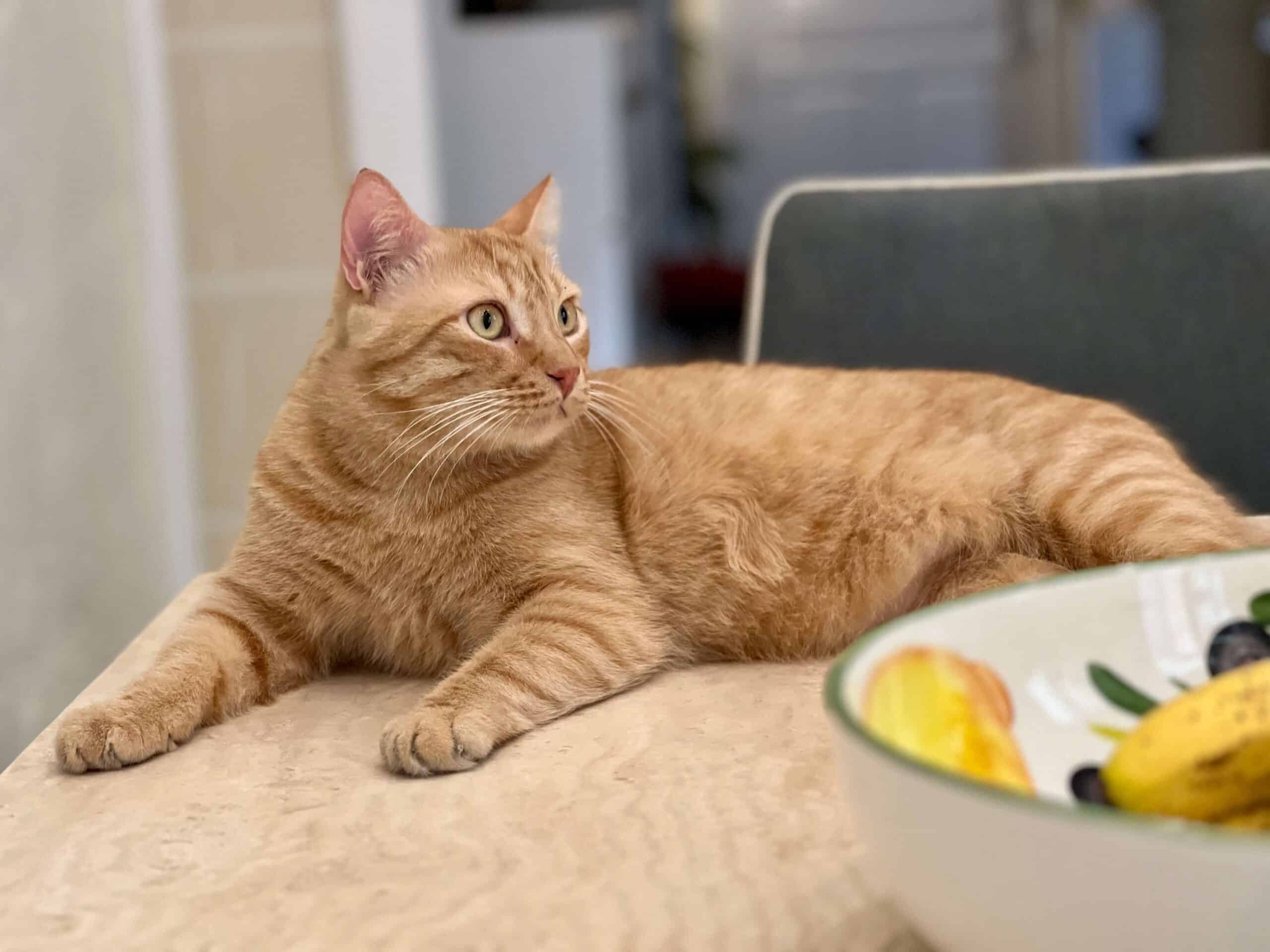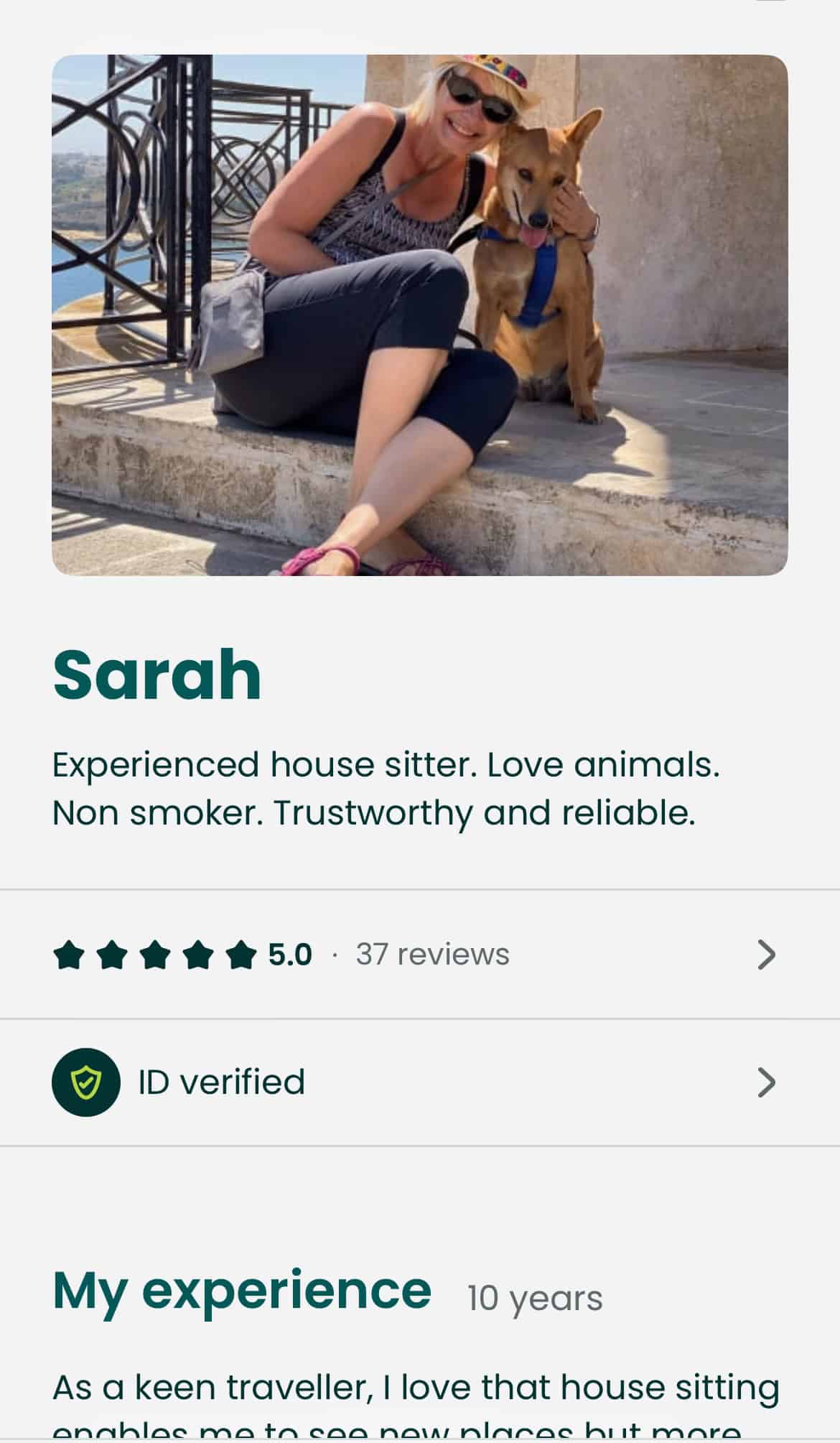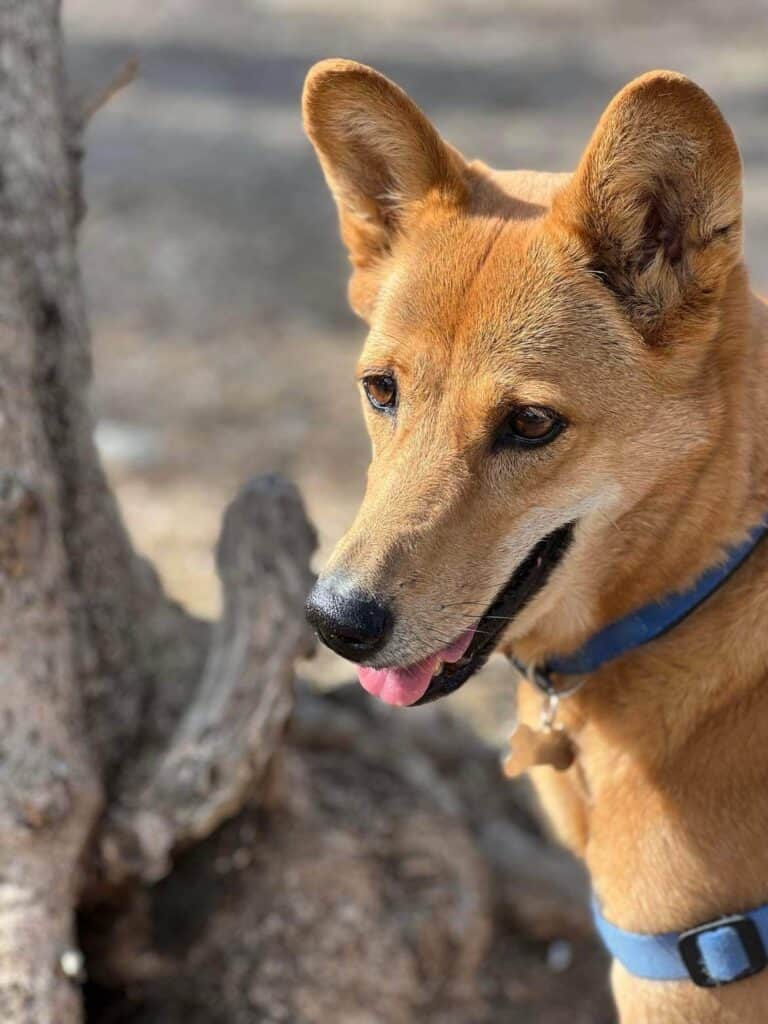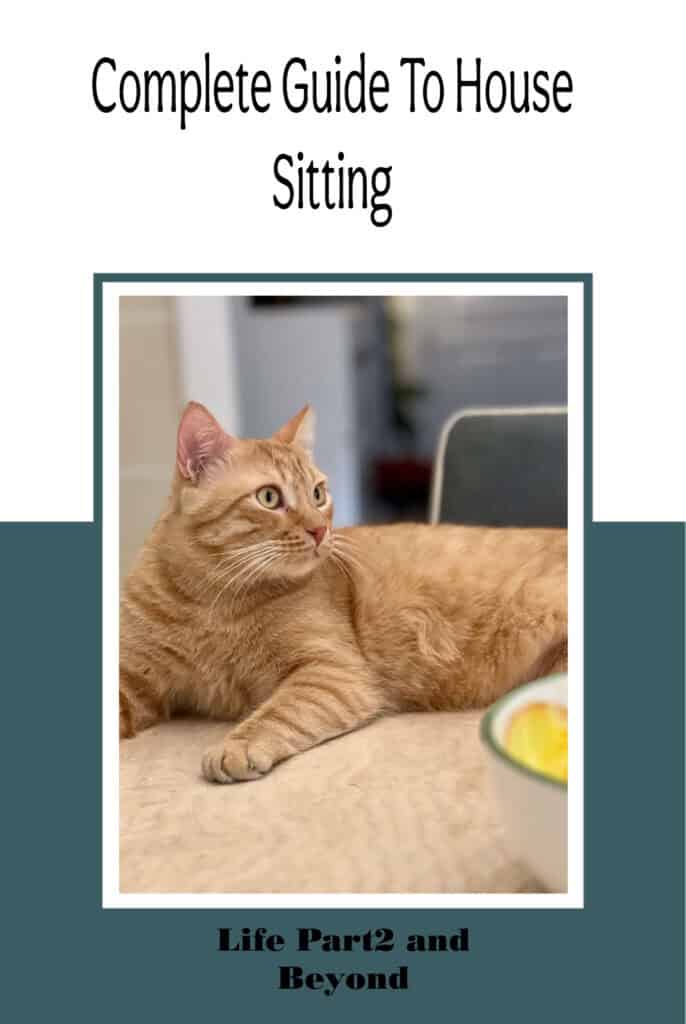Last Updated on October 2, 2025 by Sarah Wilson
I love house sitting. Over the past few years, I’ve looked after pets and homes in various locations around the world — from New York City and Hong Kong to charming European cities in Norway, Switzerland, Denmark, France, Turkey and Italy, among others. People often ask me how I got started, how it works, and whether it’s really worth it.
So, if you’re new to the concept of house sitting, this post is for you. It’s a beginner-friendly guide covering everything I wish I knew when I first started — from choosing the right platform, applying for your first sit, understanding what owners expect, and handling tricky situations.
Whether you’re dreaming of a peaceful stay in the countryside or a city stay, these tips will help you feel confident and prepared.

Honestly, I wouldn’t be able to afford to do half the travelling I do if it weren’t for house sitting. It’s not just a way to save money — it allows me to live like a local, connect with amazing pets and communities, and explore places I might otherwise never visit.
After all my pet sitting experiences, I thought it was time to share what I’ve learned from the sitter’s perspective.
I only do international sits, usually through Trusted Housesitters, the largest and best-known house-sitting platform. If you’re curious to check their website out, I have a 25% discount link for you.
Just to be clear—this isn’t an advertisement for them; it’s simply the one I prefer because the owners’ IDs are verified, and you can read reviews from previous sitters, which makes me feel much safer as a solo sitter.
There are also many Facebook groups where people post free house sits, but I personally stick with platforms that give me that extra reassurance.

I’ve also tried Nomador, another international platform in the past, though I find their website a bit more confusing to navigate.
Other well-known house sitting sites include:
MindMyHouse – budget-friendly, smaller community worldwide.
HouseCarers – one of the oldest platforms, particularly strong in Australia and New Zealand.
Workaway – not purely house sitting, but sometimes lists opportunities combining pet care with homestays or volunteer work.
One important thing to note: for international sits, many countries (including the UK and the USA) consider house sitting as “work,” even though no money changes hands. This could cause issues if you mention you’re house sitting to immigration officers.
I’m not suggesting you lie, but it’s much simpler and safer to say you’re visiting as a tourist or seeing friends.
For example, when I visited New York City earlier this year for a 10-day stay, I told immigration I was there for shopping (true) and sightseeing (also true). See, no lies!

But do research the visa rules for your destination and plan accordingly.
How to Apply for Your First House Sit With Trusted Housesitters
Create a Strong Profile
Include photos of yourself with pets, references from friends or past pet experiences, and a friendly, trustworthy bio. Highlight your love for animals and any relevant experience you may have.
Search for Sits That Match You
Use filters for location, dates, and type of pets. Don’t apply for sits that are beyond your comfort zone — start small. For example, I only house sit in places I can reach with public transportation.
Tailor Each Application
Write a personalised message for every sit. Mention the pet(s) by name if possible, reference relevant experience, and explain why you’d be a good fit. Generic messages rarely get responses. But don’t wait too long, as the popular sits go fast.
Prepare for a Video Call
Most homeowners will want a short video chat on WhatsApp before confirming their decision. Use this time to discuss routines, whether the pet takes any medications, and ask any questions about the home or pets.
💡 Pro Tip: Don’t be discouraged if your first few applications aren’t successful. Landing your first sit takes patience, persistence, and building a trustworthy profile. Once you get one, the reviews and experience make it easier to secure future sits.
So, What Does House Sitting Actually Involve?
Well, essentially, no money changes hands. It’s a mutual exchange: you receive free accommodation and the opportunity to experience life like a local, in exchange for taking care of someone’s pets, home, and plants.
I usually do cat sits—they’re a little easier and fit better with my lifestyle. When I had my dog, Angel, I always felt guilty walking other people’s dogs—it felt disloyal.
But now that I’ve adopted Mr Winston, my ginger tom, I admit I sometimes feel a little guilty about cat sitting, so I expect I will probably start taking on more dog sits.

19 Things Every House Sitter Needs to Know
1 It’s About The Pets, Not The Free Accommodation
If you don’t genuinely enjoy the company of animals, house sitting isn’t for you. During my time as a sitter, I’ve cared for extremely nervous cats in Albania to a high-energy dog in Hong Kong on the 6th floor with no lift—both very different experiences, but equally rewarding.
2 Your Profile Is Everything
Good photos, references, and a friendly, trustworthy tone will help you secure more house sits. I always include photos of pets I’ve looked after—it shows owners that I genuinely care for and engage with animals.
As a homeowner, I’ve often received applications from people with no experience, which is fine — we all have to start somewhere. However, the photos were all from nights out or parties; it was obvious that pet care wasn’t a priority.
Ensure your profile showcases your affection for animals, not just your social activities.

3 First Impressions Count
Be polite, reliable, and professional when messaging homeowners. Sharing your flight details early also shows that you’re organised and committed, which goes a long way in making owners feel confident leaving their pets and home in your care.
4 Video Calls Are Normal
Most owners will want to “meet” you virtually before confirming a sit. These days, video chats are the usual way to connect with homeowners. It’s an excellent opportunity to get to know each other and review essential details, such as daily routines, expectations, pet care, any medications, and any other information that will help you feel prepared and confident.
💡 Top Tip: Always ask if the pet takes medications in advance. On several sits, I wasn’t told about a pet’s medication needs until I arrived. I volunteer at a cat sanctuary, so I’m comfortable giving meds—but not everyone is, and not every pet is easy to medicate. Ensure you ask how the owners typically administer medications and whether the pet is cooperative with this process.
5 Flexibility Helps
The best house sits often pop up at the last minute, and dates may not always align with your ideal plans. Once you’ve booked flights, please send a copy of the itinerary to the owner so they know precisely when to expect you. It’s a small step that avoids last-minute confusion and reassures them that you’re reliable.
6 Every Sit Is Different
Some pets are easy-going, while others require medication, multiple walks, or constant companionship. Always follow the rules set by the owners.

👉 Example: When I lived in Laos, I would advise sitters not to walk my dog outside the garden because of the aggressive stray dog packs nearby. Unfortunately, not everyone listened — but they soon learned why that rule was in place.
7 Be Clear On Responsibilities
Ask upfront about pet routines, household chores, garden watering, and other practical details, such as spare keys and emergency contacts. It’s always wise to have a backup plan just in case.
8. When To Say No
Not every sit is the right fit. If an owner is vague about pet behaviour or the responsibilities seem overwhelming, it’s ok to decline. Trust your instincts — if something feels off or unsafe, it’s better to wait for a sit that feels right for you and the pets.
Some people don’t like to leave a bad review and instead, write nothing. So when checking someone’s profile and they have several blank spaces where there would normally be a review, consider that a red flag!
9. Arrive The Day Before If Possible
Arriving before the owners leave allows for a proper handover and for the pets to become accustomed to you. With dogs, it’s especially important to meet them before the owners leave for their trip.
While I personally prefer to arrive before the owners head off, on many cat sits, I’ve never actually met the owners in person and just followed their instructions for where to find the keys. In those cases, it’s a good idea to send a quick message when you arrive, to confirm everything’s fine.
💡 Tip: If invited to arrive early, double-check whether the owners will be providing a bed for the night. I once had an awkward moment where an owner invited me the day before, but at 10 pm, asked where I was staying that night!
That said, in 99.9% of cases, if they say “come early,” they’ll have a room ready for you.
Although some house owners go above and beyond — like in Spello, Italy, where the owners very kindly put me up in a lovely hotel the night before.
10. Pet First Aid Basics
Having a basic knowledge of pet first aid can make a massive difference in emergencies. Many organisations offer online courses tailored for pet sitters. Carrying a small first aid kit and knowing the location of the nearest vet will give you extra confidence.
11. Keep The House Clean And Tidy
Always leave the home as good as (or better than) you found it. If something breaks, don’t hide it — be honest, apologise, and offer to replace it.
12. Stay In Touch
Most owners appreciate updates and photos of their pets. I usually send daily pictures and updates, but I always check with the owner first — some want messages twice a day, some twice a week, and some prefer not to be contacted at all.
13. Expect Quirks
From complicated TV remotes, low water pressure, cultural differences to pets with unusual routines, it’s all part of the deal.
14. Occasionally Things Can Go Wrong
Good communication with the owners is essential. During a repeat house sit, one of my favourite cats became seriously ill and, sadly, had to be put to sleep. I stayed in close contact with the owner, who was fortunately able to attend the vet virtually via video. Still, it was an emotional experience—a reminder that house sitting can sometimes involve unexpected and difficult situations.
15. Balance Pet Care With Travel Plans
Remember, as the sitter, you’re responsible for the pets, so long day trips or late nights out might not always be practical. Agree in advance on how long pets can be left alone.
16. Reviews Matter
Both you and the owner leave feedback. An excellent review builds trust and opens doors to more sits. Be honest.
17. Cultural Etiquette Tips
House sitting internationally means respecting local customs. Simple things, such as whether to remove your shoes indoors, how to greet neighbours, or being mindful of noise levels, can help you fit in and build good relationships.
18 Cancellation and Changes
Sometimes plans change, whether it’s the sitter or the homeowner. If you ever need to cancel a sit, please let the homeowner know as soon as possible and, if possible, offer to help them find a replacement. Likewise, homeowners should provide sitters with ample notice if their travel plans change.
Clear communication is essential — sudden cancellations can be stressful for both pets and people. Many platforms also have cancellation policies, so it’s worth familiarising yourself with the rules before confirming any sit.
19. Enjoy It!
House sitting is an incredible way to travel slowly, meet amazing pets, and feel part of a community wherever you go.
It isn’t always glamorous — sometimes things go wrong — but with honesty, good communication, and a genuine love for animals, it’s an experience you won’t forget.
So, if you’re interested in starting, check out Trusted Housesitters (here’s my 25% discount link.
And if you have any questions about house sitting that I haven’t addressed, please don’t hesitate to ask. I’m happy to share more tips from my experiences, whether it’s about pets, travel logistics, or finding the right sit.
Keep an eye out for my upcoming post from the homeowner’s perspective, with tips for making your house and pets feel safe in the hands of a sitter.
Disclaimer: Some of the links on this website are “affiliate links”, meaning that if you click on the link and make a purchase, I will receive a small commission at no extra cost. This helps me to keep my website running and continue to share my travelling knowledge with you. Thank you for using the links on my website.
Pin This Post For Later







